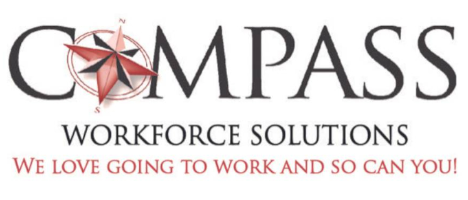[av_post_metadata post_selected=” seperator=’/’ before_meta_content=” after_meta_content=” margin=” margin_sync=’true’ padding=” padding_sync=’true’ av-desktop-margin=” av-desktop-margin_sync=’true’ av-desktop-padding=” av-desktop-padding_sync=’true’ av-medium-margin=” av-medium-margin_sync=’true’ av-medium-padding=” av-medium-padding_sync=’true’ av-small-margin=” av-small-margin_sync=’true’ av-small-padding=” av-small-padding_sync=’true’ av-mini-margin=” av-mini-margin_sync=’true’ av-mini-padding=” av-mini-padding_sync=’true’ align=’left’ custom_title=” size=” av-desktop-font-size=” av-medium-font-size=” av-small-font-size=” av-mini-font-size=” alb_description=” id=” custom_class=” template_class=” av_uid=’av-lhv3kw1g’ sc_version=’1.0′ admin_preview_bg=”]
[av_metadata_item metadata=’published’ before_meta=” after_meta=” link_meta=’default’ link_target=” av_uid=’av-lhv3kugk’ sc_version=’1.0′]
[av_metadata_item metadata=’categories’ before_meta=’in’ after_meta=” link_meta=’default’ link_target=” av_uid=” sc_version=’1.0′]
[/av_post_metadata]

Ø We rejoiced over receiving a calendar invite for a meeting? (At the rate at which we meet at work, an invite probably evokes a moan rather than a happy dance! In the United States, there are around 55 million meetings held each week. That’s at least 11 million per day and over 1 billion per year.)
Ø We remained 100% engaged in a meeting that lasted for more than 15 minutes? (Don’t feel bad about admitting the truth … employees report multitasking in at least 41% of meetings, with email checking and texting being the leading distractions).
Ø We left a meeting feeling fully gratified by what was accomplished during that meeting? (The odds are against us in this regard, as well – while, on average, we spend 15% of our time on meetings, the majority of those meetings (71% of those to be precise) are considered unproductive.)
We all do them at work – be it by initiating them or participating in them. To give you some perspective, on average, an employee spends about 15% of their time in meetings, with middle managers, senior managers and CEOs spending about 35%, 50% and 72% of their time in meetings. These are just some of the very interesting (if not shocking) facts shared in an online Zippia article titled 28 Incredible Meeting Statistics [2022]: Virtual, Zoom, In-Person Meetings And Productivity.
During the normal course of our work, we convene meetings for a variety of purposes – we bring our teams together to have status updates, to share information, to make decisions, to solve problems, to build relationships and teamwork or to stimulate innovation. Yet we tend to consider the reason only superficially for holding a meeting before scheduling it. And after we schedule it, we have a hard time putting the basics in place, such as an agenda, to ensure we have a productive and efficient meeting (based on available research, only 37% of workplace meetings actively make use of meeting agendas).
Taking the time to create clarity around what we are trying to accomplish by holding a meeting before scheduling it can help answer critical questions that will ultimately impact their effectiveness and impact to the business.
· Is the meeting necessary? Can information be shared or input provided via email or in another asynchronous online way without impacting the outcome we are seeking to achieve? (When remote staff were asked what annoys them the most about meetings, 55% reported as their pet peeve the fact that most meetings could have been an email.) If we can achieve our goal via another means, we should forgo the meeting and give our staff the time they need to get their work done (65% of employees feel that meetings prevent them from completing their own work).
· Who should be invited to the “party?” Should we require (or even invite) stakeholders who need to be consulted or kept informed of the issue at hand to attend our meeting? Although virtual meetings have made it easy to be more inclusive regarding who we invite to meetings, when there are too many people in a meeting it reduces the productivity of the key participants who need to be involved. It wastes colleagues’ time, who could simply read the meeting minutes, and ultimately, it increases the overall cost of the meeting. Research shows that the optimal number of people per meeting is only five to eight attendees. Compare that to the post-COVID average number of 17.7 attendees and it’s easy to understand why organizations spend roughly 15% of their time on meetings, with 71% of those meetings being considered unproductive, costing us an estimated $37 Billion per year.
· What will be the “rules of engagement” for a productive meeting? What, if any, will be the process(es) that we should follow to ensure we achieve the purpose for which we are holding the meeting? For example, to run an effective decision-making meeting, we should have a structured agenda in place that identifies the decision(s) that need to be made and participants must know in advance how the decisions will be made (especially, if there is no consensus in the group). If we are holding a meeting focused on innovation or problem solving, how do we structure it in a way that our more process and procedure minded colleagues shift from a convergent to a divergent frame of mind? In a similar vein, if we are holding a meeting aimed at building relationships and teamwork, how do we make this relevant to and engage our colleagues who are more bottom-line/results-focused or introverted in nature?
These are just some of the fundamental questions we need to be thinking about when it comes to holding meetings at our workplace. Given the statistics thus far, one thing is quite clear – to make our meetings as productive, efficient and engaging as possible we need to approach them with a great deal more intentionality and preparation than we currently do. That is an investment of time and effort that will pay good dividends to the bottom line of our business.
If you want to explore how you can create a better culture around meetings and optimize the value those meetings hold for your staff and your business, reach out to connect with one of our expert staff.








